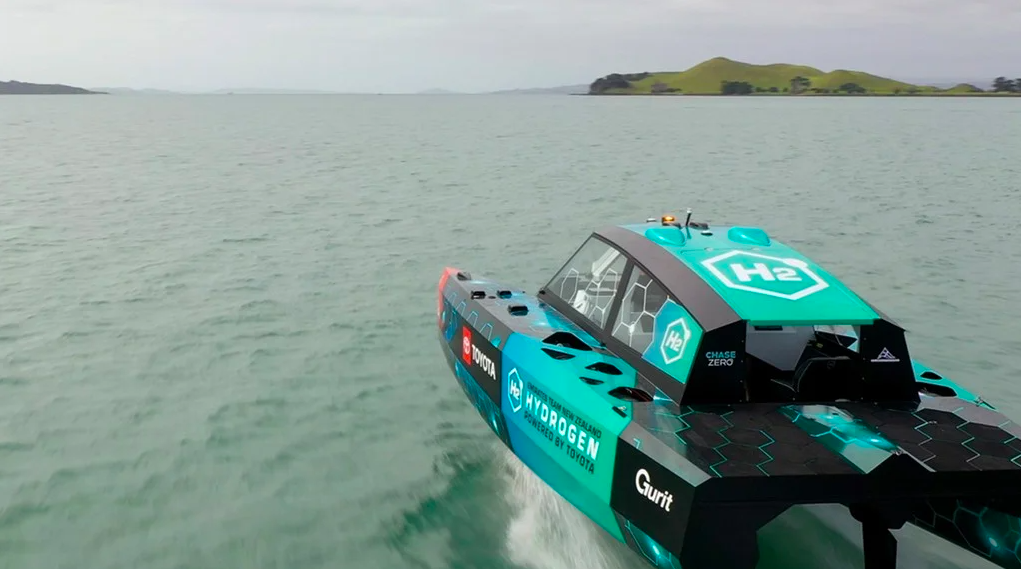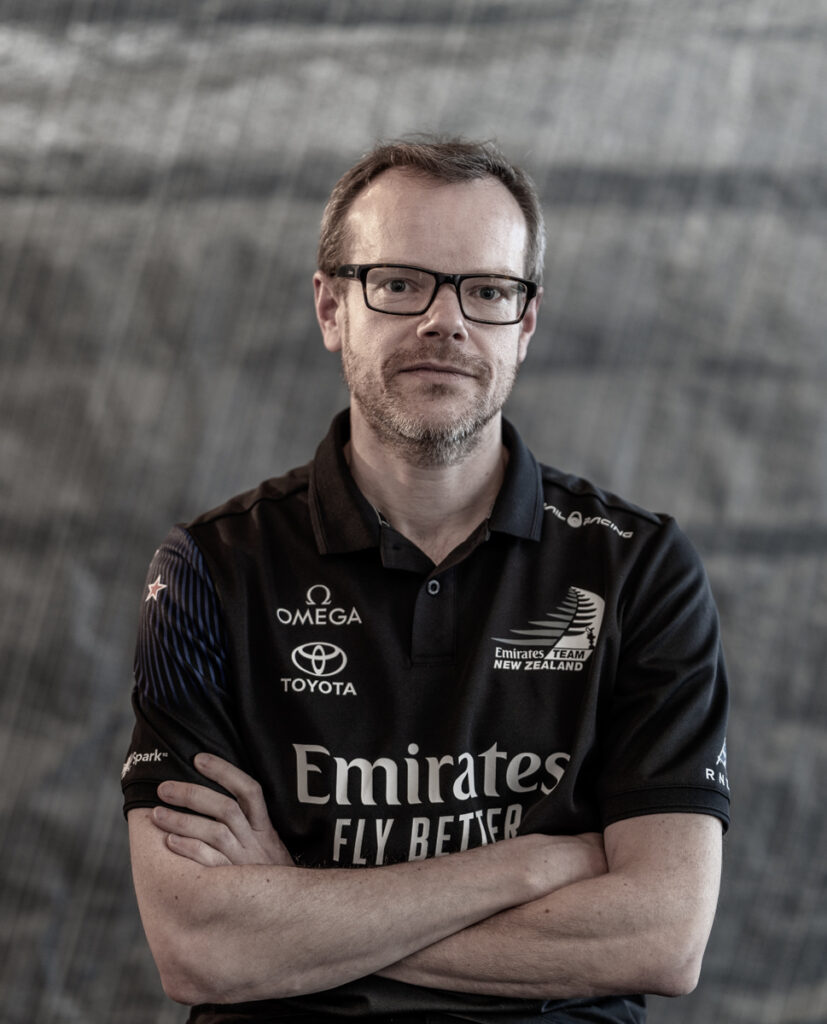
In Focus: Legislation needs to catch up with opinion, says America’s Cup designer

“I would like to see stronger and more immediate legislation to make using renewable fuels the most economic choice,” says Dan Bernasconi, chief technical officer of Emirates Team New Zealand (and by default, also CTO of Design Works).
While Bernasconi (below) says he really doesn’t know many doubters about the need to move to fully sustainable fuels, he is disappointed that the world seems so slow to accept the changes needing to be made.

“Legislation is a long way behind where it needs to be . .” but “within the marine industry, away from politicians, there is a lot of motivation to be moving as fast as we can.”
That movement is speeding along under the auspices of Design Works. That’s an ETNZ offshoot company that was officially launched at this year’s METSTRADE, to apply the experience and technology developed in winning the America’s Cup to commercial projects.
This work spans superyachts, powered craft and other technology (autopilots and autonomous vessels) and obviously, hydrogen. (In June 2021 MIN reported that hydrogen would be used to power the next Americas Cup‘s chase boats and a mere year later, ETNZ’s Chase Zero achieved 50 knots on a six hour run.)
And now five more foiling chase boats, based on the original 10m prototype design but extended to 13m length, are now being built at McConaghy.
“The hydrogen powertrain has been rock solid since day one,” Bernasconi says. “What has really surprised us is the reliability and lack of maintenance required. We are in discussions with further potential customers about developing other categories of foiling hydrogen boat.”
But there’s still a lot to learn as the use of hydrogen technology in marine is in its infancy, he reflects.
“Finding combinations of fuel cells, tanks, batteries, motors and cooling systems that all work together is quite a challenge. The technology is changing very rapidly, so it can also be hard to keep up with what’s available. However, like all technology, it’s something that you can learn, and we will find our next generation hydrogen boat a lot more straightforward to design than the first.”
Bernasconi admits hydrogen was the only feasible green energy ETNZ could use that would give the range needed, giving “maybe ten times what we would have achieved with batteries.
“I’m not promoting it [hydrogen] as the fuel of choice, but it has a place.
“We did consider liquid hydrogen (as opposed to our gaseous hydrogen solution) but it is technically challenge to liquify hydrogen and we would have struggled to find a source of it.
“The obvious and easy green solution is fully electric, but it’s not possible with current battery technology to get sufficient range.
“More range would mean more batteries, meaning more weight, meaning you need more power to carry that weight, meaning more batteries… and you quickly get into a spiral that you can’t resolve.
“Battery powered boats are quickly gaining traction, and are a big part of the green future in marine. Batteries are really well suited to vessels that travel short distances and can recharge frequently, like commuter ferries and some leisure craft. However, for longer distances, hydrogen has a big role to play. For journeys longer than about 30 minutes at a reasonable speed, you’re into hydrogen technology, and it’s a very clean solution. The hydrogen can be produced with electrolysis with zero emissions, using renewable energy such as hydro-electric power that dominates New Zealand, and it only produces water when used to produce electricity in a boat.
“Batteries and hydrogen serve slightly different sectors. Maybe at some point batteries will go through a revolution in their storage capacity, making hydrogen less necessary, but at the moment it’s [hydrogen] really the only viable green option for longer range – except sails of course.”
More about Chase Zero 13m
The 13m Chase Zero boat has been styled for VIPs, with a luxurious interior cabin for high-speed transfers, race spectating and race support, says builders McGonaghy Boats. With high-speed performance (50 knots), and exceptional visibility, it will serve as an incredible spectating platform.
The Chase Zero boat currently has seating for eight in custom-built carbon race seats.
Using Toyota fuel cells, this foiling chase boat has achieved speeds of over 50 knots during trials, and delivers cruising at an impressive 30 to 35 knots. Constructed in full carbon, Nomex and structural foam, the 13m boat has a weight of 5,600kg, a draft of 2.2 metres, and a 4.5-metre beam.
The two Toyota Hydrogen fuel cells are housed within each hull and deliver 80kW’s of power each. The powertrain cooling system is via a seawater pick-up located at the front of each foil-strut torpedo, with two pick-up pumps per hull. The port and starboard main foils are connected via a central wing foil spar and the single rudder features an elevator with adjustable rudder rake.
The power is harnessed with fly-by-wire joystick controls in the main console, alongside the navigational equipment, VHF, AIS, and system monitoring displays.
The post In Focus: Legislation needs to catch up with opinion, says America’s Cup designer appeared first on Marine Industry News.
